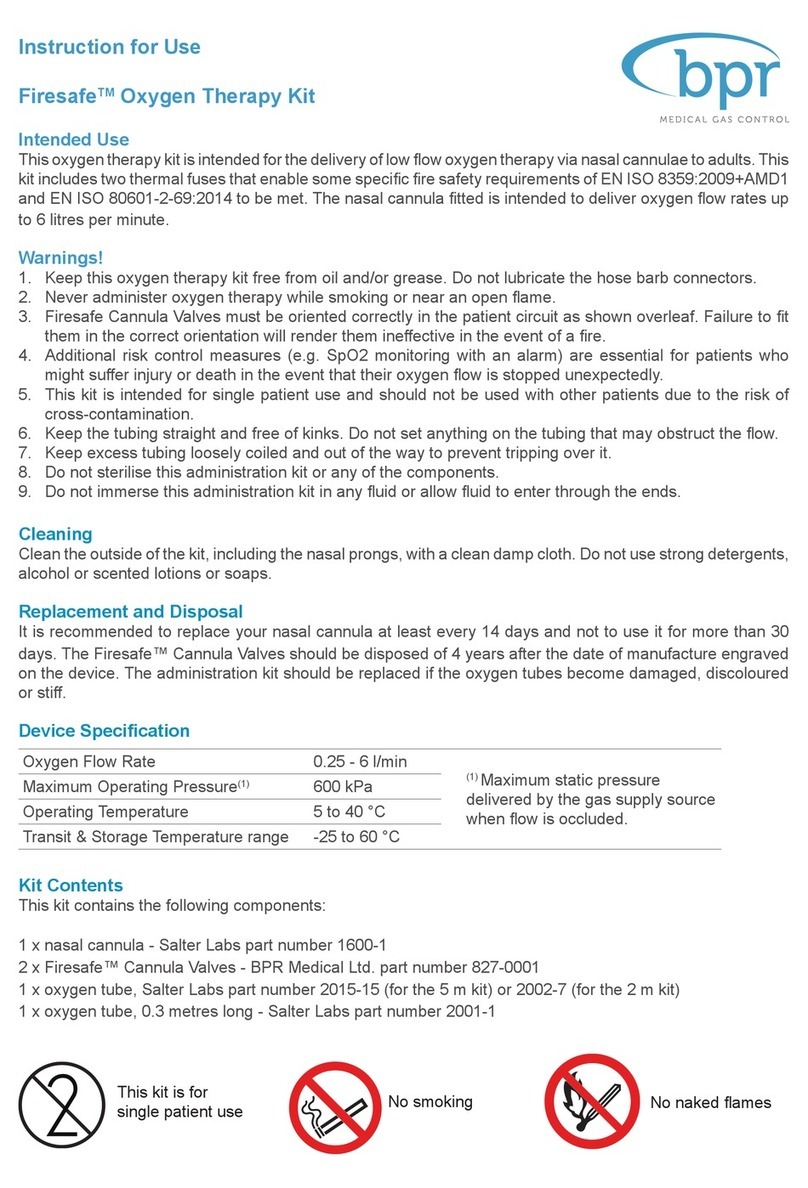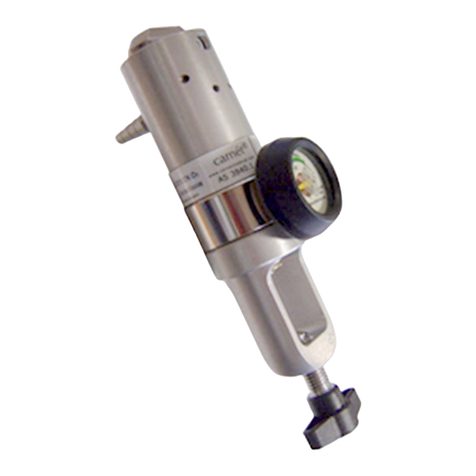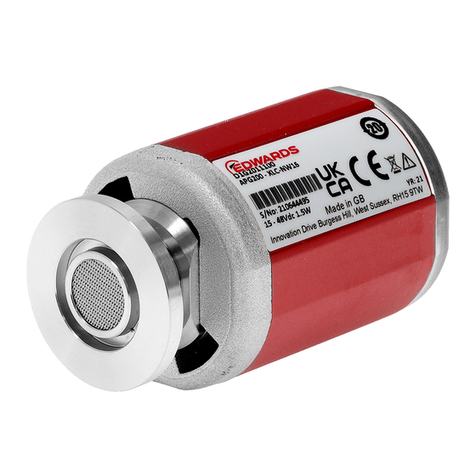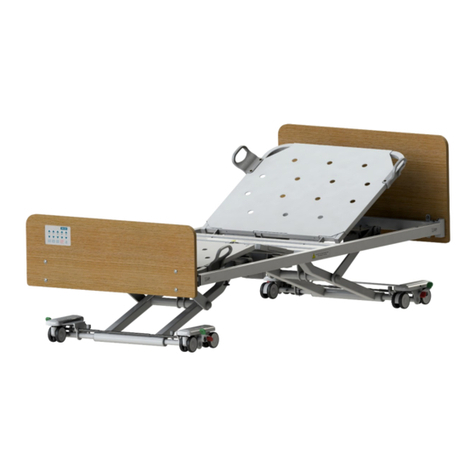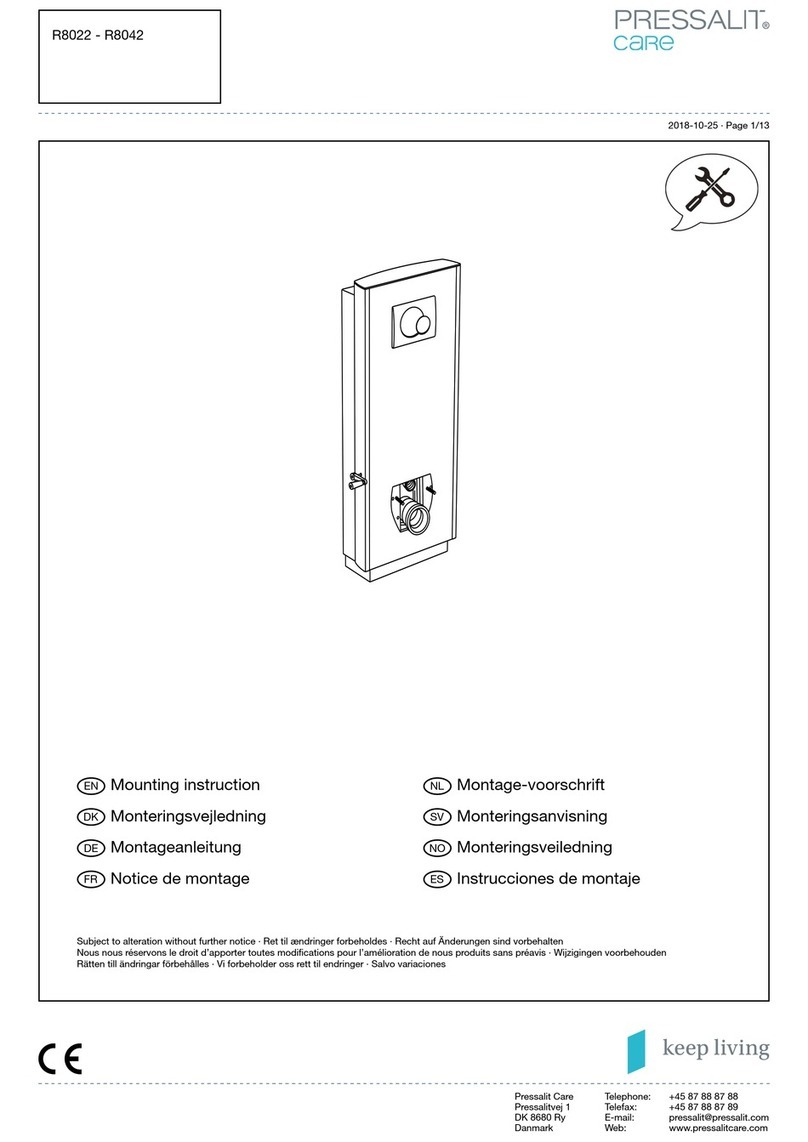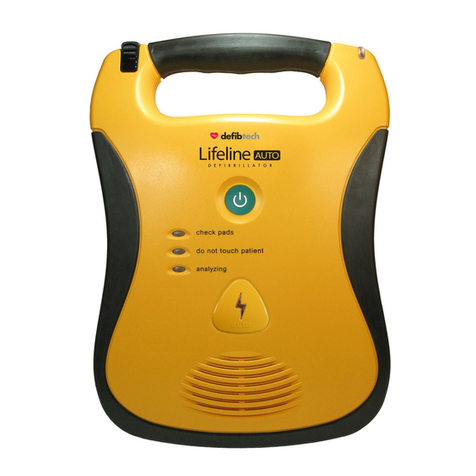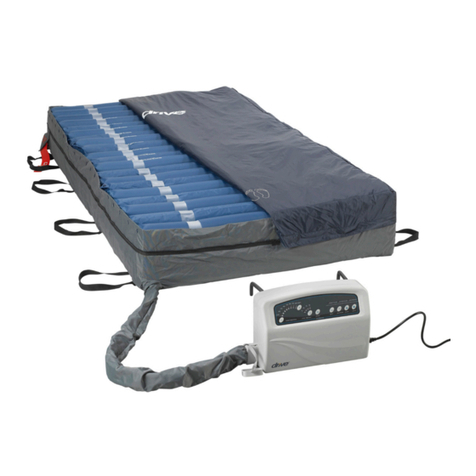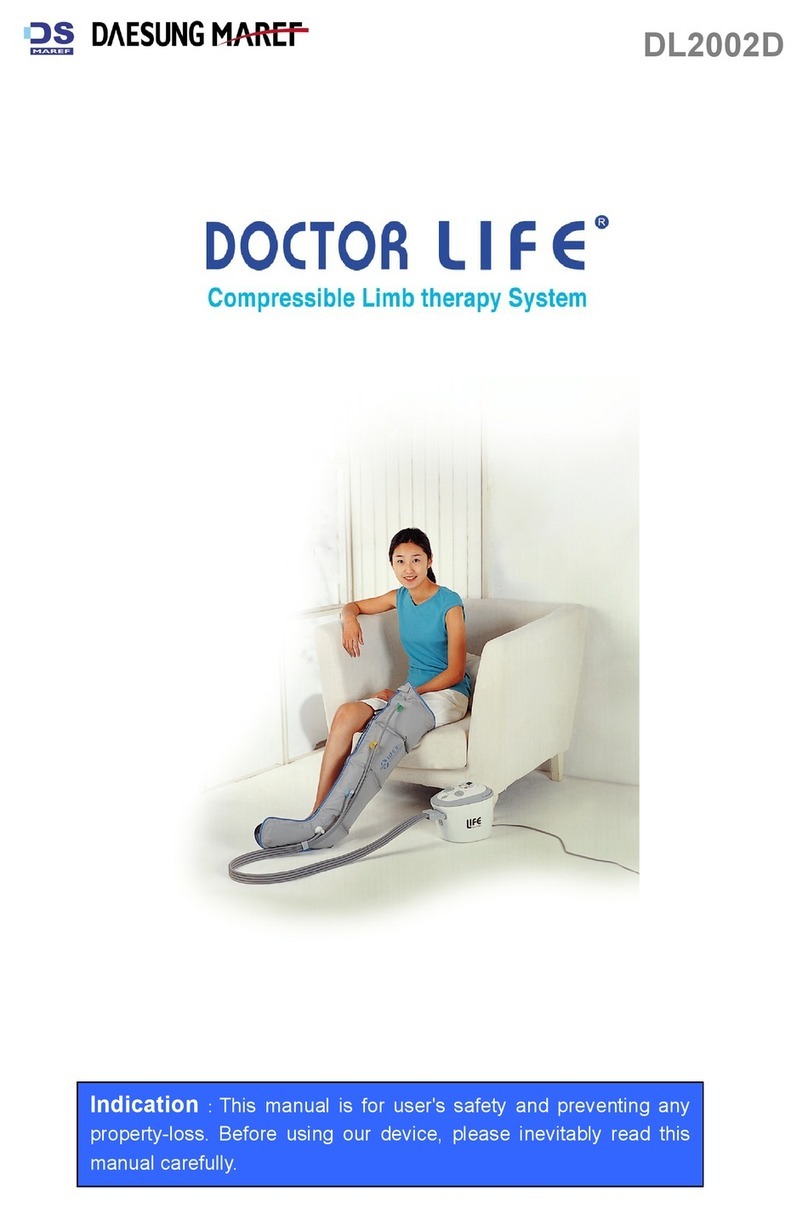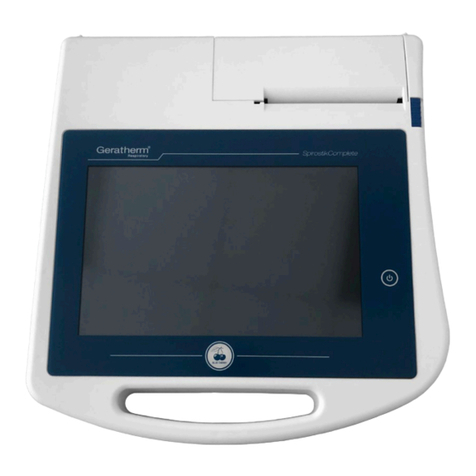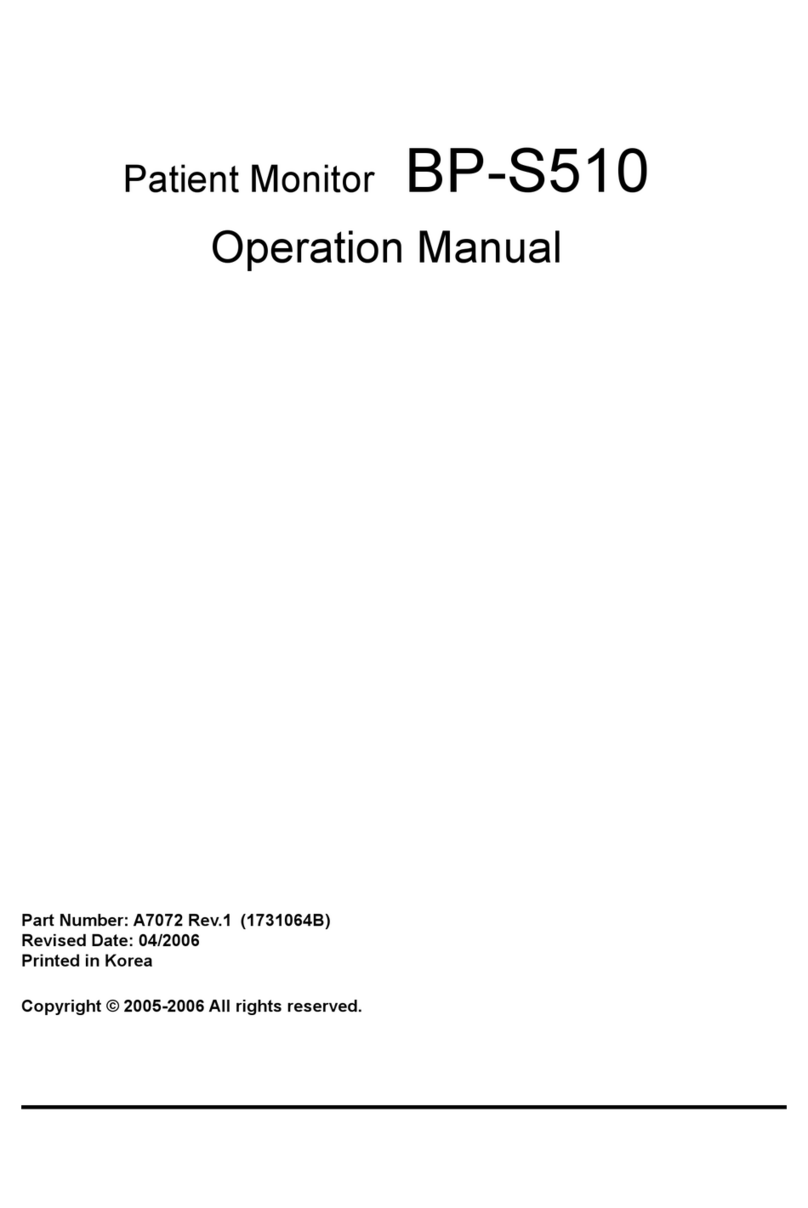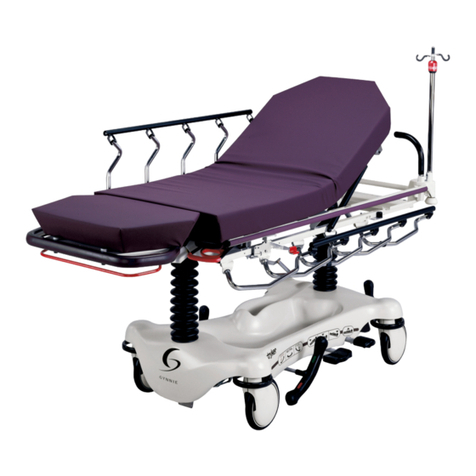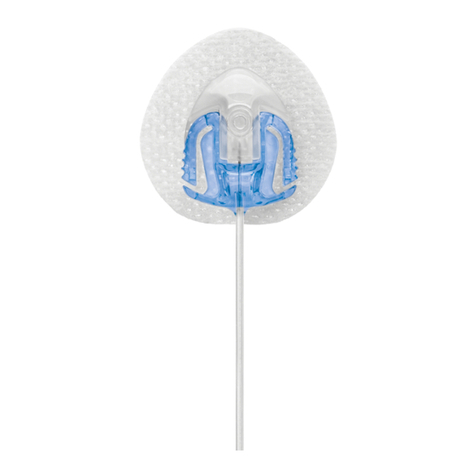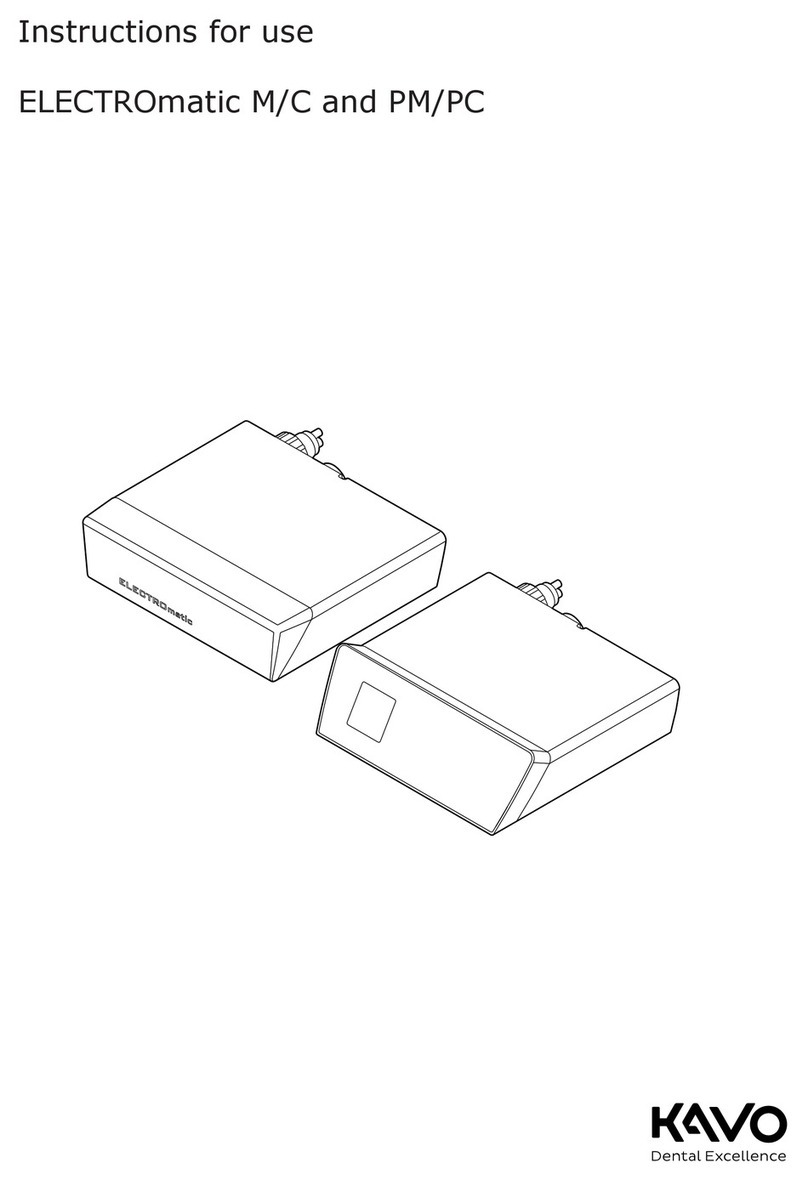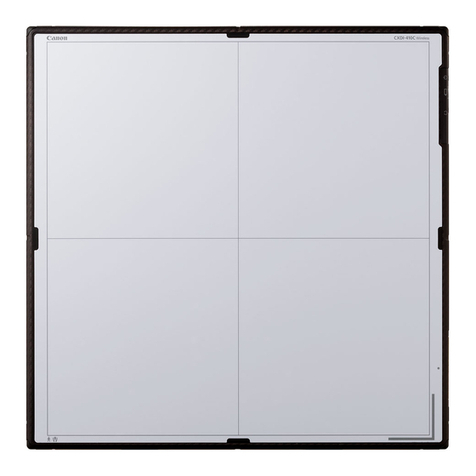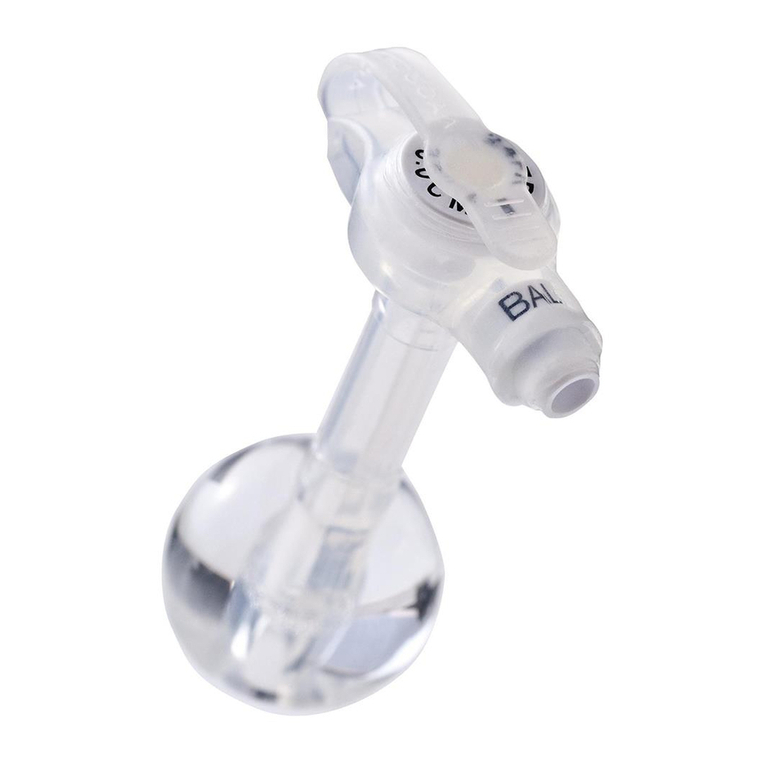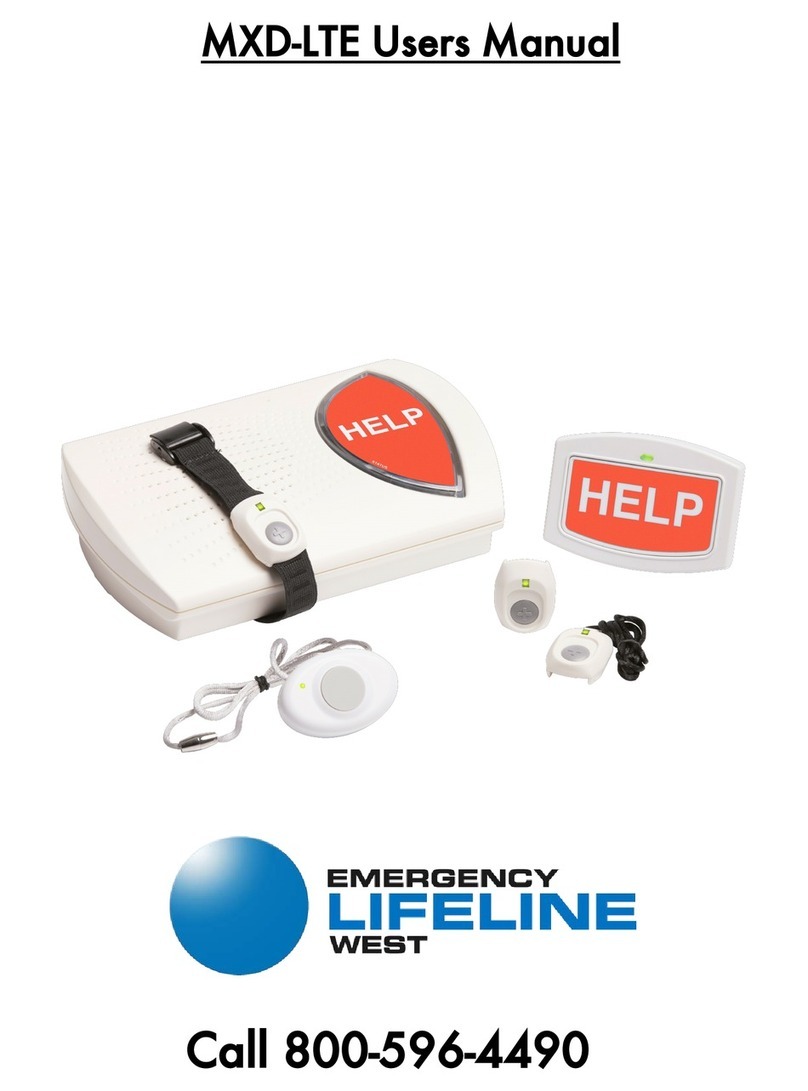bpr ultraflow User manual

702-0051.19
September 2020
Oxygen Demand Valve
Instructions for Use


Contents
1. Symbols................................................................................................................................................... 2
2. Warnings and Cautions........................................................................................................................... 2
2.1. Warnings!.........................................................................................................................................2
2.2. Cautions!..........................................................................................................................................3
2.3. Notes................................................................................................................................................3
3. Functional Description............................................................................................................................. 3
3.1. Intended Use....................................................................................................................................3
3.2. Technical Description.......................................................................................................................3
4. Operating Instructions ............................................................................................................................. 4
4.1. Fitting the Exhalation Valve..............................................................................................................4
4.2. Removing the Lanyard.....................................................................................................................4
4.3. Refitting the Lanyard ........................................................................................................................4
4.4. Connecting to the Oxygen Supply....................................................................................................5
4.5. Testing Prior to Use..........................................................................................................................5
4.6. Fitting an Exhalation Valve...............................................................................................................5
4.7. Operation..........................................................................................................................................5
4.8. After Use ..........................................................................................................................................6
5. Cleaning and Disinfection........................................................................................................................ 6
5.1. After Every Use................................................................................................................................6
5.2. Suspected Contamination ................................................................................................................6
6. Maintenance............................................................................................................................................ 6
6.1. Servicing...........................................................................................................................................6
7. Specification............................................................................................................................................ 7
8. Troubleshooting....................................................................................................................................... 8
9. Parts and Spares..................................................................................................................................... 9
10. Distributor Details.................................................................................... Error! Bookmark not defined.

2
1. Symbols
Warning!
Indicates a potentially hazardous situation which, if not avoided, could result in
personal injury to the user or others
Caution!
Indicates a potentially hazardous situation which, if not avoided, could result in
damage to the equipment or property
Note
Highlights points that might allow more convenient or efficient operation of the
equipment
Use no oil
Service due date
2. Warnings and Cautions
2.1. Warnings!
Read through this entire instruction manual before using or showing others how to use this demand
valve. As with all medical equipment, attempting to use this device without a thorough
understanding of its operation may result in patient or user injury.
In the United States of America, Federal Law restricts this device to sale by or on the order of a
physician.
Risk of asphyxiation - do not secure a face mask to the patient with a headstrap, harness or any
other means.
Oxygen is or should be considered a drug and supplemental oxygen should only be used for
medical purposes on the authority of a physician and then strictly in accordance with their
instructions.
Oxygen therapy may be a critical treatment. Additional risk control measures such as SpO2
monitoring with an alarm and a backup oxygen supply with delivery device should be provided for
patients who might suffer distress or injury if their oxygen supply is not available or is stopped
unexpectedly.
Ensure that the oxygen supply is sufficient for the proposed therapy and is supplied within the
pressure range given in the Device Specification. If the supply is an oxygen cylinder, check the
cylinder contents gauge regularly.
This demand valve is only for use with medical grade oxygen. Check the cylinder or supply is
medical grade oxygen before use.
Use a new exhalation valve for each new patient or after 30 days of use for the same patient.
The demand valve should not be used as a resuscitator.
Oxygen is not flammable; however, the presence of it will drastically increase the rate and severity
of combustion. Oil and/or grease in the presence of an oxygen enriched atmosphere will become
highly combustible. Oxygen must never be allowed to come into contact with oil, grease or other
petroleum-based substances. Do not use oil or grease on this demand valve.
Gas specific connectors are fitted to the demand valve. Do not attempt to modify the fittings to suit
other gases or fitting systems.

3
Many hand creams and moisturisers contain paraffin and petroleum bases which are highly
flammable and must never be allowed to contact the Demand Valve. Ensure hands are clean and
dry before operating the equipment.
Do not use or store analgesic gas near excessive heat (>50°C/125°F). Always refer to the medical
gas supplier’s recommendations.
Do not smoke around oxygen equipment.
Only appropriately trained personnel working in controlled conditions may disassemble or assemble
this demand valve.
Disassemble the device before cleaning. Do not submerge an assembled demand valve in any
fluid.
If using a cylinder and regulator, ensure that the device is connected to the regulator and the
cylinder valve is properly opened before beginning therapy.
When therapy is complete, disconnect the demand valve from the gas supply. When the source of
oxygen is from a gas cylinder, always close the gas cylinder valve when the demand valve is not in
use and disconnect the demand valve from the pressure regulator.
Arrange the oxygen hose carefully to avoid damage to the hose and the potential for causing a trip
hazard. Never pull or apply excessive force to the gas hose. A leaking hose may result in higher
local oxygen concentrations and an increased risk of fire.
2.2. Cautions!
The performance of the demand valve may be affected if it is stored or transported in temperatures
outside of the range -20°C to 60°C (-4°F to 140°F).
The demand valve is not suitable for autoclaving. The handset is protected from contamination in
normal use by a single patient use exhalation valve.
The single patient use exhalation valve is not suitable for cleaning. If the exhalation valve becomes
visually soiled or discoloured it should be replaced.
2.3. Notes
Peak flow through the demand valve might be restricted resulting in increased work of breathing for
the patient in the following circumstances:
oIf the oxygen regulator or oxygen supply used does not meet the specification.
oIf an extension hose other than those listed in this manual for use with the demand valve is
used.
3. Functional Description
3.1. Intended Use
The Ultraflow™Oxygen Demand Valve is intended to be used for the delivery of 100% oxygen in
response to the patient’s inspiratory effort on the order of a physician.
This product is designed for use with adult and paediatric patients. This product is not intended to
be used with infants or neonates.
3.2. Technical Description
The demand valve comprises of two main components; a demand valve handset and a single
patient use exhalation valve (supplied separately).

4
The exhalation valve is single patient use to prevent cross contamination between patients. It may
be used by a single patient for up to 30 days.
The demand valve handset is designed to be reused and can be cleaned and disinfected, although
routine disinfection is not necessary as it is protected from contamination by the single patient use
exhalation valve.
The demand valve handset contains a specially designed tilt valve mechanism that opens when the
diaphragm in the back of the demand valve handset moves forward as a result of the patient
inhaling. When the tilt valve opens, the gas, which is under pressure behind the tilt valve, passes
through the handset and is inhaled by the patient. The deeper the patient breathes, the greater the
volume of gas delivered. When the patient exhales the diaphragm moves back, the tilt valve closes
and no further gas is delivered.
The demand valve offers a very low resistance to flow during both patient inhalation and exhalation,
which means less effort for the patient. This is achieved by the unique, patented exhalation valve
design that diverts exhaled gas out through a special valve, thus eliminating the need for the patient
to exhale through a highly resistant patient filter as is the case with other demand valve systems.
The demand valve can be driven directly from the terminal unit of a medical gas pipeline system or
from a medical gas cylinder via a suitable pressure regulator. A gas hose complying with BS EN
ISO 5359 carries the gas from the gas supply source to the demand valve.
The demand valve should be used with either a mouthpiece or a facemask. The exhalation valve
has a viral filter that allows the flow of inhaled gas to the patient and prevents contamination of the
demand valve handset from the patient’s expired breath.
4. Operating Instructions
4.1. Fitting the Exhalation Valve
Use a new exhalation valve for each new patient or after 30 days of use for the same patient. The
exhalation valve should be replaced if it becomes soiled or discoloured.
4.2. Removing the Lanyard
The lanyard helps to prevent the patient dropping the demand valve when they are not actively
using it. Should a patient not want the lanyard then it can be removed.
To remove the lanyard, simply pull the lanyard retainer downwards until it is free of the moulded
cover and lift the lanyard away. Then refit the lanyard retainer.
4.3. Refitting the Lanyard
1. To refit the lanyard,
simply pull away the
lanyard retainer.
2. Fit the lanyard into the
groove in the handset
cover.
3. Refit the lanyard retainer
taking care to line up the
slots in the lanyard retainer
with the lanyard.

5
4.4. Connecting to the Oxygen Supply
Before use, visually check both the hose and demand valve for any damage or contamination. Do
not connect or use the device if there are any doubts about its condition.
The demand valve is supplied with a gas specific connector that is designed to connect to a mating
gas outlet. Gas outlets might be part of a terminal unit in a medical gas pipeline system or part of
a pressure regulator outlet on a gas cylinder.
If you are using a cylinder supply, ensure that the cylinder contents are adequate for planned
therapy.
Connect the gas specific inlet connector to the appropriate gas outlet.
Warning! Where the gas specific connector is dependent on a threaded fastener (e.g. DISS CGA
V-5 1240), make sure that the connection is tight before turning on the supply pressure.
For quick connector probes (e.g. BS5682, SIS, AFNOR), ensure that the connection is correctly
made by gently pulling the gas hose before turning on the supply pressure.
4.5. Testing Prior to Use
Confirm the correct operation of the demand valve before beginning therapy by pressing the Test
Button. Oxygen should flow freely when the Test Button is pressed and should stop when the Test
Button is released.
If the demand valve does not operate correctly, remove it from use and refer to the trouble shooting
guide in Section 8 of this booklet.
4.6. Fitting an Exhalation Valve
Use a new exhalation valve for each new patient or after 30 days of use. The exhalation valve
should be replaced if it becomes soiled or discoloured.
1. Place the exhalation
valve on the demand
valve handset as shown.
Do not apply any force at
this stage.
2. Rotate the exhalation
valve until it ‘clicks’ into
place then press down.
3. Press down the securing
clip on each side to lock into
place.
4. Fit a face mask or mouthpiece.
4.7. Operation
The patient should place the mouthpiece into their mouth or the face mask over their nose and
mouth and inhale. The deeper the patient breathes, the greater the volume of oxygen delivered.

6
The demand valve is designed for self-administration of oxygen and should not be used for periods
beyond those prescribed.
Warning! Risk of asphyxiation - do not secure a face mask to the patient with a headstrap, harness
or any other means.
Continue to monitor the gas cylinder contents (if applicable) during use of the demand valve and be
aware that the hose may be a trip hazard.
4.8. After Use
When oxygen therapy is complete, disconnect the demand valve from the oxygen supply. Where
the oxygen is being supplied from a cylinder, turn the cylinder off and depressurise the handset
before disconnection by pressing the Test Button until the gas is fully exhausted.
Store the demand valve in a clean dry environment between uses.
5. Cleaning and Disinfection
Ensure the demand valve handset is disconnected from the gas supply before attempting to clean it.
Caution! The demand valve is not suitable for autoclaving. The handset is protected against contamination
during normal use by a single patient use exhalation valve.
5.1. After Every Use
Wipe over the outside of the demand valve handset and the gas supply hose with an alcohol or
disinfecting wipe.
5.2. Suspected Contamination
If there is reason to believe that the demand valve handset is contaminated it can be disinfected
using a cold disinfection process but will need to be disassembled first. Full details of how to
disassemble, clean and disinfect the device can be found in the Service Manual.
Never immerse the demand valve handset in any fluid or attempt to clean internal parts whilst the
demand valve handset is assembled.
6. Maintenance
6.1. Servicing
The demand valve handset has an intended life of 10 years and must be serviced after 5 years to
ensure that it continues to perform in accordance with its specification. Full details of the
recommended servicing requirements can be found in the Service Manual or on SupportWeb.
Contact your local distributor for information about SupportWeb online service training.
When serviced by BPR Medical Ltd. and where the time to end of life is less than the normal service
interval, the Service Due date will be replaced by the End of Life date and preceded by a symbol
( ). In these cases, the date now indicates when the device reaches end of life.
As an alternative to servicing the demand valve, a service exchange option is available to replace
a used handset with a new one.
The Service Manual and access to SupportWeb can be obtained from your local BPR Medical
distributor, details of which can be found at www.bprmedical.com.

7
7. Specification
Specification
Value
Inspiratory Resistance
<1.5 kPa (0.22 psi) at 200 l/min
<0.25 kPa (0.036 psi) at 10 l/min
Supply Pressure1
Maximum 600 kPa (87 psi)
Minimum 310 kPa (45 psi)
Supply Flow Capacity1
>120 l/min
Demand Valve Peak Flow
>200 l/min
Intended Life
10 years
Environmental
Transport and Storage Temperature: -20°C to 60°C (-4°F to 140°F)
Operating Temperature: 5°C to 40°C (41°F to 104°F)
Humidity: 0-100% RH non-condensing
Regulatory
CE: Medical Device Directive 93/42/EEC –Active Medical Device –Class IIa
Applied Standards
BS 5682
Probes (quick connectors) for use with medical gas pipeline systems
BS EN ISO 5356-1
Anaesthetic and respiratory equipment. Conical connectors. Cones and sockets
BS EN ISO 5359
Low pressure hose assemblies for use with medical gases
BS EN ISO 15001
Anaesthetic and respiratory equipment. Compatibility with oxygen
NF S 90 116
Medico-surgical equipment. Terminal units and related probes for medical fluids
DIN 13260-2
Supply systems for medical gases. Part 2: Dimensions and allocation of probes
and gas specific connection points for terminal units for compressed medical
gases and vacuum
SS 875 24 30
Medical gas pipeline systems. Connectors for medical gases
CGA V-5
DISS Diameter Index Safety System
SANS 1409
Outlet sockets and probes for medical (gas and vacuum) service used in hospitals
1Indicates minium supply pressure at stated value of gas flow. Based upon an adult breathing at 30 bpm with a tidal volume of 1 litre and I:E ratio
of 1:2

8
8. Troubleshooting
Fault
Possible Cause
Solution
No gas flow
Demand valve handset is not
connected properly.
Check gas supply. Check that the gas specific probe
is correctly connected.
Gas cylinder empty.
Replace gas cylinder.
Medical gas terminal unit on a
pipeline system is isolated.
Seek advice from someone authorised to operate the
medical gas pipeline system isolation valves.
Demand valve probe blocked.
Repair or service required.
Hole in demand valve diaphragm.
In this instance, the demand valve
will work with the Test Button but
not when used conventionally by
inhaling through the mouthpiece
or face mask.
Repair or service required.
Audible gas leak
Valve or diaphragm has become
dislodged.
Remove the exhalation valve and check that the
diaphragm is lying flat and that it moves forwards and
backwards when the Test Button is pressed
Tilt valve worn, bent or broken.
Repair or service required.
Constant gas flow
Tilt valve damaged or blocked.
Repair or service required.
Insufficient gas flow
Tilt valve damaged.
Repair or service required.
Diaphragm perforated.
Repair or service required.
Supply pressure too low and/or
gas cylinder nearly empty.
Check gas supply and/or replace gas cylinder.
Exhalation valve will
not fit to or be retained
on the demand valve
body
Single patient use exhalation valve
has damaged location lugs.
Check the underside of the single use exhalation valve
to see if the locating lugs have been bent over or
otherwise damaged.
It is important to rotate the single use exhalation valve
until it locates in the demand valve housing before
pressing it down and engaging the locating ears.
Trying to force the single patient use exhalation valve
down before correctly locating it will damage the
exhalation valve beyond repair.
Fit a new single patient use exhalation valve.

9
9. Parts and Spares
Part Number
Description
831-1003
Oxygen Demand Valve - 3m Hose - AFNOR connector (NF S 90 116)
831-2003
Oxygen Demand Valve - 3m Hose - DIN connector (13260-2)
831-3003
Oxygen Demand Valve - 3m Hose - Nordica AGA connector (SS 875 24 30)
831-4003
Oxygen Demand Valve - 3m Hose - BS 5682 connector
831-4010
Oxygen Demand Valve - 3m Hose - BS 5682 connector - 5 Exhalation Valves and Facemasks
831-5003
Oxygen Demand Valve - 3m Hose - DISS connector (CGA V-5 1240)
Consumables
828-0039
Single Patient Use Exhalation Valve for use with Face Mask (25)EN 1281-1 (22mm)
828-0040
Single Patient Use Exhalation Valve with Mouthpiece (25)EN 1281-1 (22mm)
828-0046
Single Patient Use Face Mask (Box 40) EN 1281-1 (22mm)
Spare Parts and Servicing
609-0082
Oxygen Demand Valve Cover Grey
610-0084
Demand Valve Lanyard (10)
831-5504
Oxygen Demand Valve 4m DISS extension hose
999-1002
Demand Valve Factory Service
999-1003
Oxygen Demand Valve Service Kit - 3m Hose - AFNOR
999-2003
Oxygen Demand Valve Service Kit - 3m Hose - DIN
999-3003
Oxygen Demand Valve Service Kit - 3m Hose - Nordica AGA
999-4003
Oxygen Demand Valve Service Kit - 3m Hose - BS 5682
999-5003
Oxygen Demand Valve Service Kit - 3m Hose - DISS
Demand Valve Test Instrument
828-0053
Demand Valve Test Instrument
605-0060
Demand Valve Test Instrument supply hose - MA4 CPC (BS 5682)
605-0072
Demand Valve Test Instrument adaptor hose - MA4 O2(BS 5682)

BPR Medical Limited
+44 (0)1623 628 281
Qarad EC-REP BV
22 Hamilton Way, Mansfield, Notts.
Pas 257, 2440 Geel
NG18 5BU, United Kingdom
www.bprmedical.com
Belgium
Table of contents
Other bpr Medical Equipment manuals
